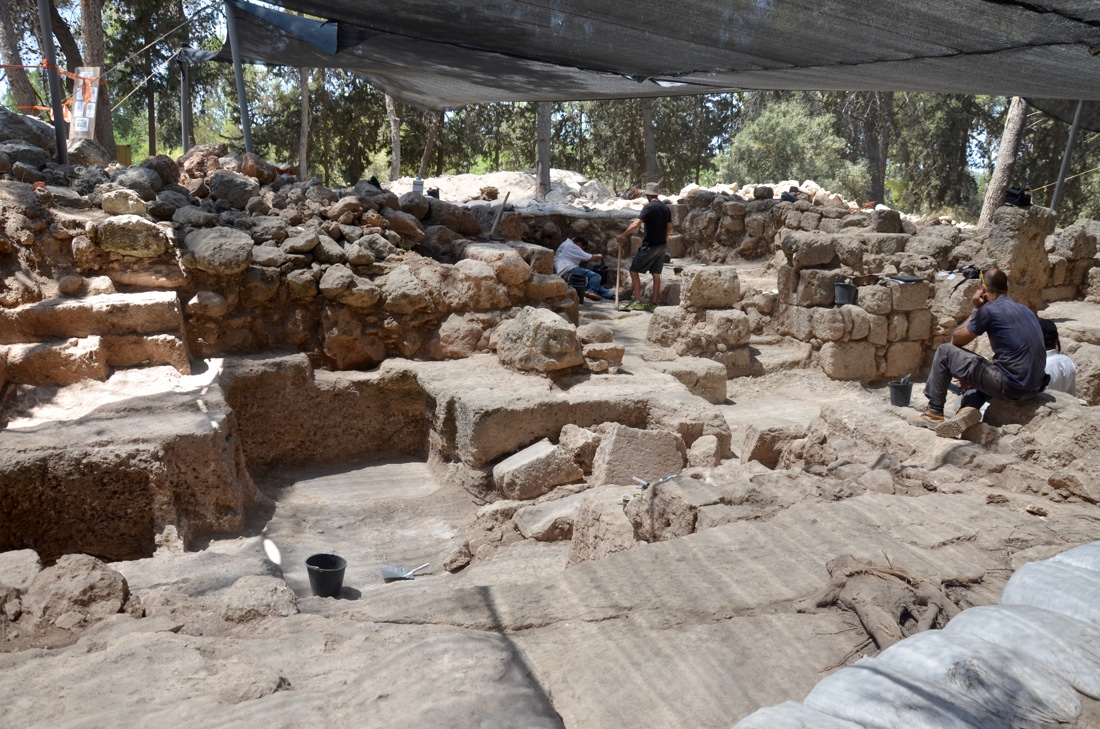Rebel Maccabees stormed and defeated a stronghold of the Seleucid Empire.

Archaeologists have discovered the burned remains of an ancient Hellenistic fortress in Israel that fell to Jewish rebels more than 2,000 years ago.
A guerrilla army called the Hasmoneans, also known as the Maccabees, defeated and set fire to the citadel during the revolt that is commemorated by the Jewish festival of Hanukkah. Researchers recently found the ruined stronghold at a site in the Lachish Forest in the foothills of the Judean Mountains in southern Israel, representatives with the Israel Antiquities Authority (IAA), said in a statement.
The fort was destroyed around 112 B.C. — decades after the Hanukkah “miracle” took place in Jerusalem — at a time when a Maccabee leader and Jewish high priest named Johanan (John) Hyrcanus was leading the Hasmoneans in their ongoing struggle for independence from the Seleucid Empire, IAA representatives said.
Located atop a tall hill, the fortress would have provided a strategic view of the main road and of nearby Maresha, a bustling and important capital city during the Hellenistic period. The building was likely “part of a fortified line erected by the Hellenistic army commanders” and was intended to protect Maresha against Hasmonean attacks, according to the statement.
“However, the finds from the site show that the Seleucid defenses were unsuccessful,” IAA excavation directors Saar Ganor, Vladik Lifshits and Ahinoam Montagu said in the statement. “The excavated building was badly burnt and devastated by the Hasmoneans.”
The fort’s perimeter measured about 50 feet (15 meters) in width and length, and the external stone walls were approximately 10 feet (3 m) wide and were carved to slope outward, to foil climbers. On the inside, the archaeologists uncovered seven rooms that were roughly 6.6 feet (2 m) tall; a stairwell led to an upper level that was not preserved, but when that floor was intact the fort’s height would have been about 16 feet (5 m), IAA representatives said.
Under the rubble of the fort’s collapsed upper level, the team discovered hundreds of artifacts. After clearing away thousands of stones, the archaeologists excavated iron weapons, slingshots, pottery and coins dating to the second century B.C. Charred wooden beams told the scientists that the fort had been overwhelmed by military forces and burned by the victors, who were likely Hasmoneans under Hyrcanus’ leadership.
The Hasmoneans began organizing their resistance against the Seleucids following King Antiochus IV’s desecration of the Second Temple in Jerusalem in 168 B.C., according to the Department of Ancient Near Eastern Art at the Metropolitan Museum of Art in New York City. The Maccabees (the word means “hammer” in Hebrew) eventually reclaimed and rededicated the temple, but could find only enough ceremonial oil to light the temple’s new menorah for one day. According to the so-called miracle of Hanukkah, that small quantity of oil burned for eight days — long enough for the temple priests to produce enough fresh oil to light the menorah anew each day. To commemorate the holiday, Jewish people light eight-branched menorahs over Hanukkah’s eight nights.
The discovery of the fort offers a window into the battles and victories of the Maccabee rebels thousands of years ago, providing evidence of the traditional Hanukkah stories and helping to bring them to life, Hili Tropper, the Israeli Minister of Culture and Sports, said in the statement.
After excavation at the site is completed, the fortress will be conserved and then opened for visits by the general public, the IAA said.
